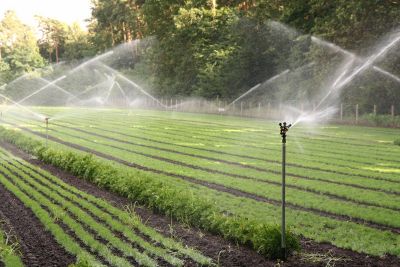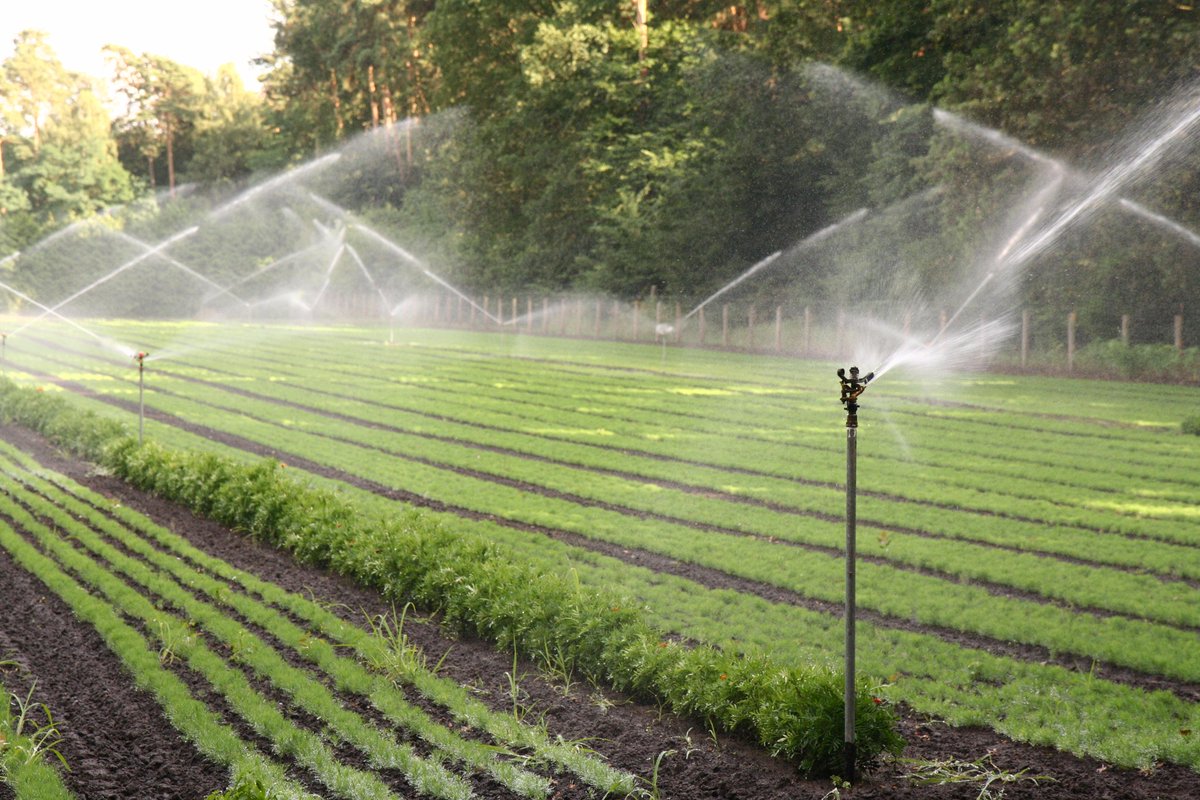Irrigation in market gardening
 Which irrigation method to choose, which equipment...
Which irrigation method to choose, which equipment...

Market gardening involves a range of production and cultivation techniques which, per unit area, are often more intensive than in other agricultural sectors. The diversity of production environments (under cover, in the open air) and species grown adds a degree of complexity to the consideration of inputs and the use of references.
In most configurations, however,irrigation remains a necessity to ensure crops develop properly. This portal presents the main irrigation technologies used in market gardening, and serves as an introduction to all the articles on this subject at the bottom of the page.
Controlling the irrigation of market garden crops
While water is often a limiting factor in market gardening, it can also be detrimental to plant growth if supplied in excess. It is therefore a production factor that needs to be managed according to a number of factors.
Useful reserves
The first of these factors is the soil's useful reserve, which is defined as"the maximum quantity of water that the soil can hold by plants for their long-term water supply and transpiration".[1]. Plants therefore draw water from this reserve and disperse it into the atmosphere through evapotranspiration. It is therefore important to understand the useful reserve of your soil, as well as its characteristics (easily usable reserve, field capacity, moisture content, texture, compaction) before trying to replenish it through irrigation.[2].
Rooting depth
In an approach to irrigation management based on readily usable reserves, it is important to consider the root exploration of cultivated plants.
Vegetable plants can be divided into 3 groups according to their rooting depth :[2]
Plant needs
In a more mathematical approach, you can choose to adapt the irrigation of plants according to their needs, refined according to their stage of development, the type of soil, the temperature, and so on. These are defined according to theactual evapotranspiration (AET), which can be estimated by multiplying thepotential evapotranspiration (PET) published in the local agricultural press and a crop coefficient (KC ) to refine this value for each crop.
Monitoring techniques
There are a number of interesting devices and accessories for monitoring and triggering crop irrigation : pressure gauges to control the flow rate in the circuits, volumetric meters to display the quantities applied, tensiometers or simply an auger to estimate the water level in the soil, etc.
irrigation systems
Gravity irrigation

Also known as "furrow irrigation", gravity-fed irrigation is a relatively simple technique suited to gently sloping land. It consists of a network of gutters connected to a main trench into which water is poured to irrigate the crops. In particular, this technique makes it possible to use turbid water, which is usually banned from irrigation systems because of the damage it can cause to pipes (clogging, etc.). On the other hand, it is unsuitable for many situations because it requires a particular topography, the use of a high watering rate, major preparation work, and is incompatible with other agronomic tillage practices.[3]
Aspersion
Sprinkling is defined as a form of irrigation that shoots water into the air, so that it falls back in a circle onto the ground around thesprinkler.[4]. This technique is much more widely used in market gardening. It's simpler to set up, suitable for more environments (greenhouses and open fields) and allows you to adjust the amount of water and frequency of watering much more precisely.
It most often involves one of three specific types of equipment : hose reels, sprinklers and oscillating booms. They form a very wide range of equipment, from very low flow rates and ranges (micro-sprinklers) to much wider ranges (up to 20m range for sprinklers in open fields).[2]

Drip irrigation
Sometimes associated withprecision agriculture, drip irrigation is the most economical of all the systems presented. Water is channelled through a network of relatively thin pipes, with micro-holes or drippers allowing water to be applied directly to the base of the plant at a very low flow rate.
-
Système d'irrigation goutte-à-goutte sous abri - Wikipédia Commons
-
Gros plan d'un goutteur - Wikipédia Commons
This system is preferred for crops that are susceptible to fungal diseases of the above-ground parts(lettuce, tomatoes, etc.), as it avoids wetting the above-ground parts. On the other hand, it is often accompanied by increased vigilance with regard to water turbidity, and often requires a good filtration system to ensure that the drippers are not clogged with impurities.
Under cover

Irrigation under cover is often a necessity, as crops no longer benefit from 'natural' rainfall. The last two types of system (drip and sprinkler) are most often used, with a slight difference for sprinkler irrigation : overhead micro-sprinkler booms suspended from the greenhouse structure are sometimes used.
Water extraction
Access to andsustainable use of a water source are also factors to be taken into account when considering irrigation. There are many solutions that can be used collectively (basins, hill reservoirs, rainwater retention, drilling, pumping, etc.), the ins and outs of which are presented in the articles on the water resource management portal.
References
- ↑ C. Doussan, Collectif Ruedessols, I. Cousin, La Réserve Utile: concepts, outils, controverses, Atelier du RMT Sols et Territoires, 2017, Orléans, France. 40 p. https://hal. archives-ouvertes.fr/hal-01595478/document
- ↑ 2.0 2.1 2.2 BLE - CIVAM Euskal Herri, La conduite de l'irrigation en maraîchage bio, 2011. https://www.latelierpaysan.org/IMG/pdf/76819159.pdf
- ↑ C. Calcet et al, Sud & Bio - Languedoc-Roussillon, Maîtriser son irrigation en maraîchage biologique, 2016. https://www.sud-et-bio.com/sites/default/files/Fiche_Technique_Maitriser%20son%20irrigation%20en%20maraichage%20bio_2016.pdf
- ↑ Food and Agriculture Organization of the United Nations (FAO), Manuel des techniques d'irrigation sous pression, Rome, 2008. https://www.fao.org/3/a1336f/a1336f00.htm